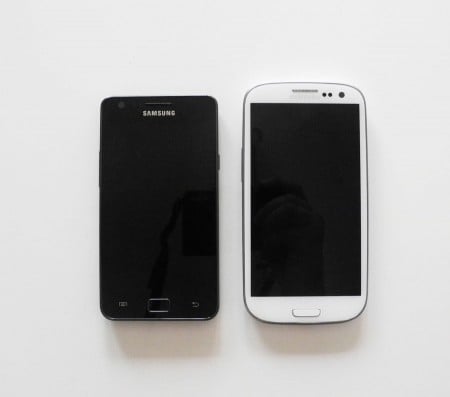What bugs us
Not everything can be totally amazing with Samsung’s flagship. After all, it’s a new phone, and right from release, it would be foolish to expect the phone to be perfect.
Nothing is perfect, and we wouldn’t expect perfection even from a device trying its hardest to
First up is the battery life, and while we were initially keen to see such a massive battery on the S3, it doesn’t pan out quite as well as expected. The capacity of the S3’s battery is set to 2100mAh, higher than the 1650mAh in the past Galaxy S2 handset and higher than the average premium handset normally has (1400-1800mAh).
But while the number is impressive, the performance is really average. We suspect the bright 720p screen, always on face tracking software, and speedy processor severely hit the battery life, offering roughly one day of life on a charge.
It’s not quite as bad as the HTC One X, a handset that couldn’t even last a full work day with us, but it’s not too far off.
Like in the S2, Samsung does offer a power saving option which will give you quite a few more hours, but this happens as the expensive of the processor and screen brightness, handicapping each a little.
While we didn’t have the time to properly test this, we suspect that if you switch off the gimmicky face tracking features, you’ll find the battery life will improve.
We’re also a touch disappointed that Samsung hasn’t readied a 4G capable version of the S3 for release in Australia, but given the battery life, we’re not sure a quad-core LTE phone with a 720p screen and this much technology would actually work right now. The possible battery life on a beast like that actually scares us.
Another thing that bothered us was the build quality.
Unlike much of the competition, the S3 comes off feeling cheap and very plasticky, even moreso than the Galaxy S2.
Samsung has made improvements to the front panel of glass, pushing the technology to the latest version of Corning’s Gorilla Glass – “Gorilla Glass 2” – now thinner and offering more touchscreen responsivity and a brighter image.
While that’s awesome, it’s a stark contrast to the glossy plastic casing that completely surrounds the rest of the handset. The plastic back is incredibly slippery, ditching the textured backs we’ve seen on the S2, Galaxy Note, and Galaxy Nexus. It’s now easier to accidentally let go of, and feel greasy, almost dirty in your hands.
It’s certainly not the quality of the heavy plastic body of either the Nokia Lumia 800 or HTC One X, and doesn’t exude the same sense of strength you get from picking up the glass and aluminium Apple iPhone 4S.












Does the music app RDIO work on this phone? It didn’t on my previous galaxy s?
Been using my Galaxy S3 now for a week and been using a iPhone4S since launch last year.
Likes – big, bright screen, surprisingly thin and feels good in the hand, very quick, cutting edge tech like NFC.
Dislikes – plastic casing feels a bit cheap and ‘greasy’, some things are gimmicky (Smart-Stay doesn’t always work, S-Voice not as ‘smart’ as Siri), confusing array of settings and counter-intuitive settings menu structure, battery life is about 1 day max at normal use.
Still – great effort by Samsung!
Had same problom, i bought an origional HTC charger and it fitted better and chargers quicker.I have one for sale. A spare one. U can email me and we could work out a price and postage.
Been using s3 from few past weeks excellent smartphone in every aspect from iphone 4s.Lets you do so many things whereas iphone restricts your freedom to use the phone as you want and do not even has the options that s3 offers you on hand.Will never buy an apple iphone.
What’s the best text application people have found for their G3? Swift Keys drove me mad and T-Swipe isn’t much better.
My G3 Bluetooth can’t find my car so I can use my car as my handsfree. It worked beautifully with my Iphone 4. I also can’t use the car’s USB-radio dock as the it connects and disconnects every few seconds.
I love “Swype” myself. Super fast, lots of nice themes. I believe it was the original…
[Edit: oh wow i just realised this was two years old lol… i was thinking i was on a different page. Oh well, you might still be looking two years later i guess 🙂 ]